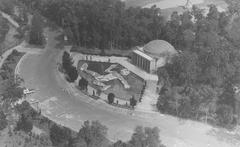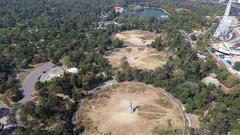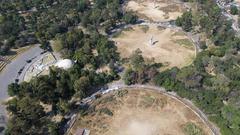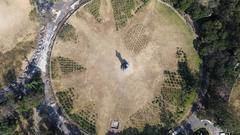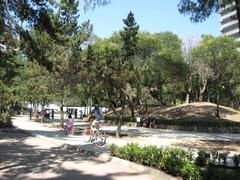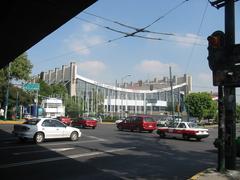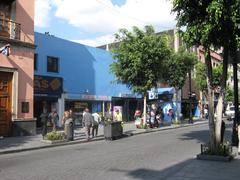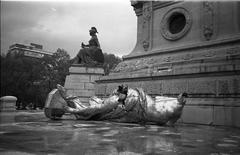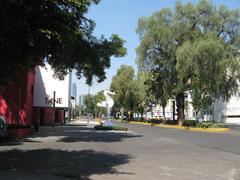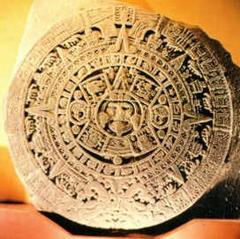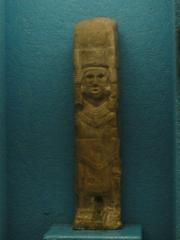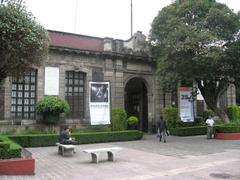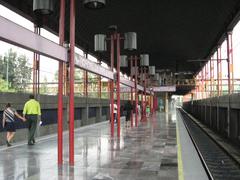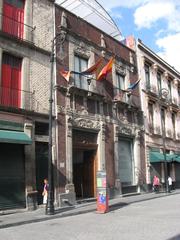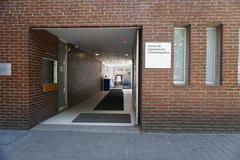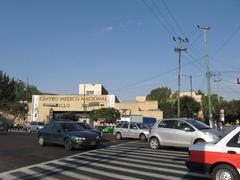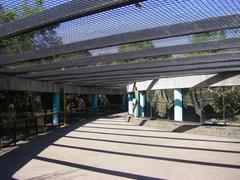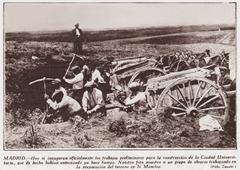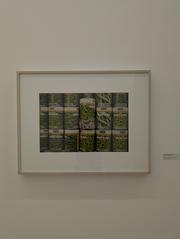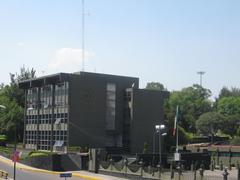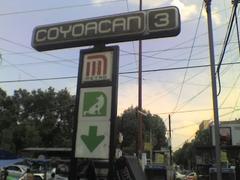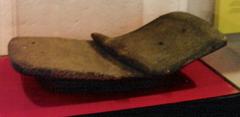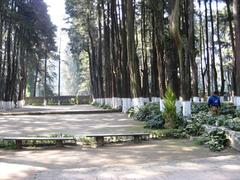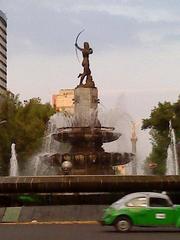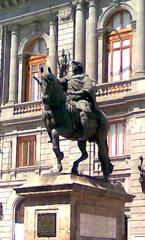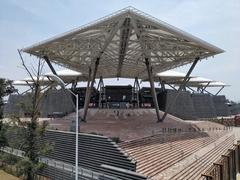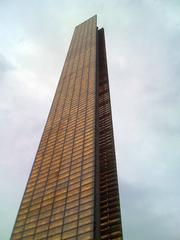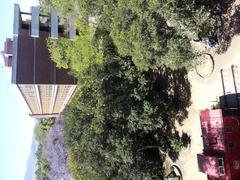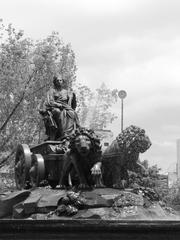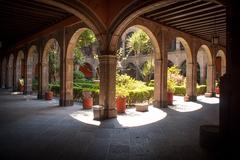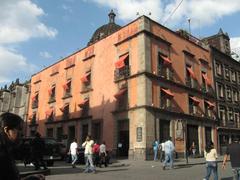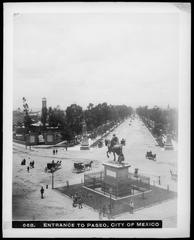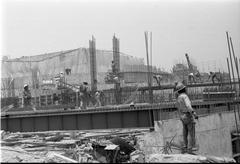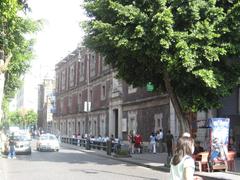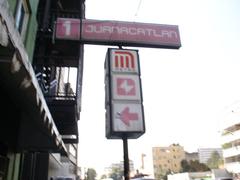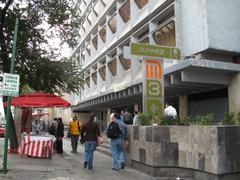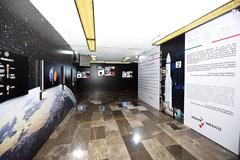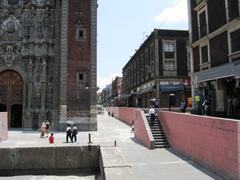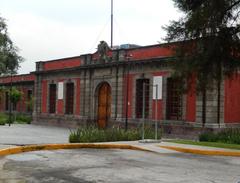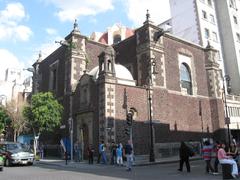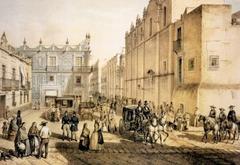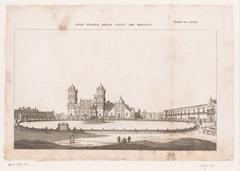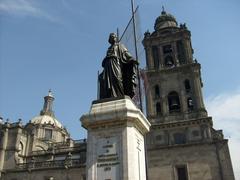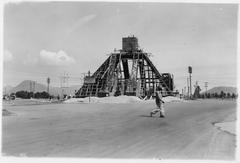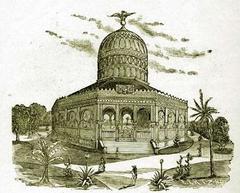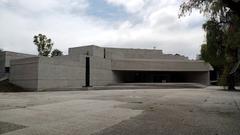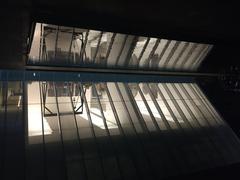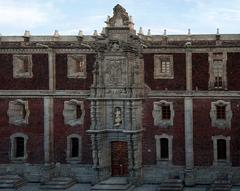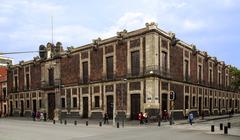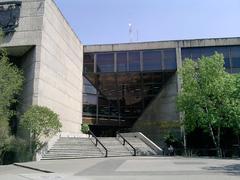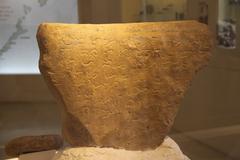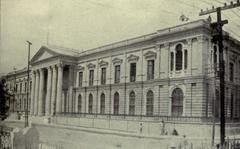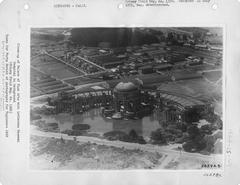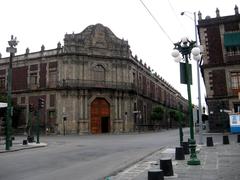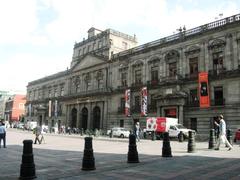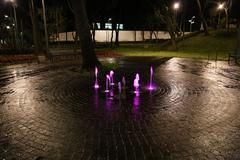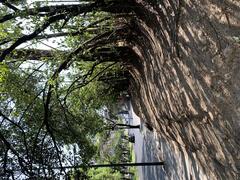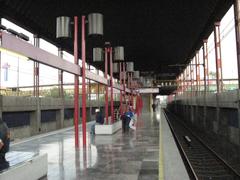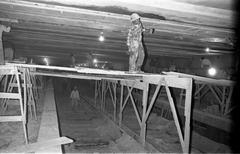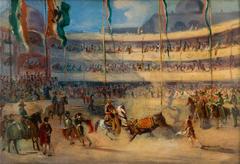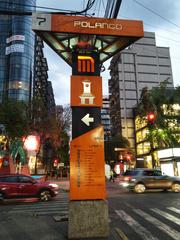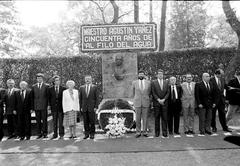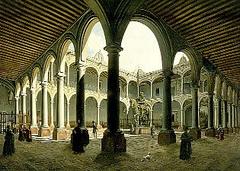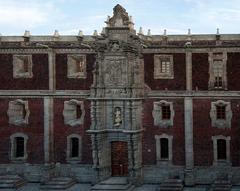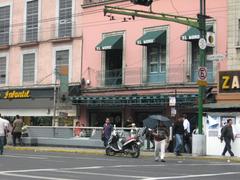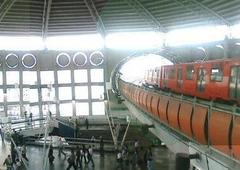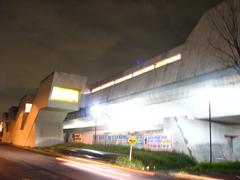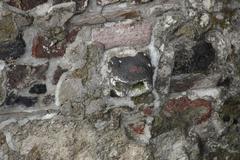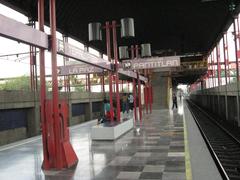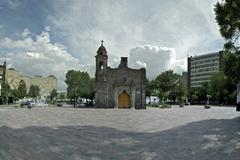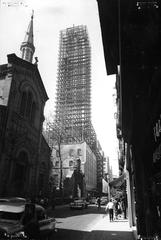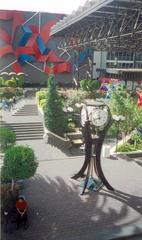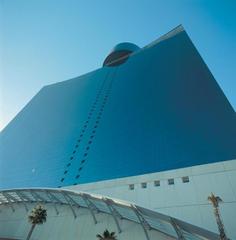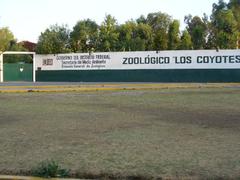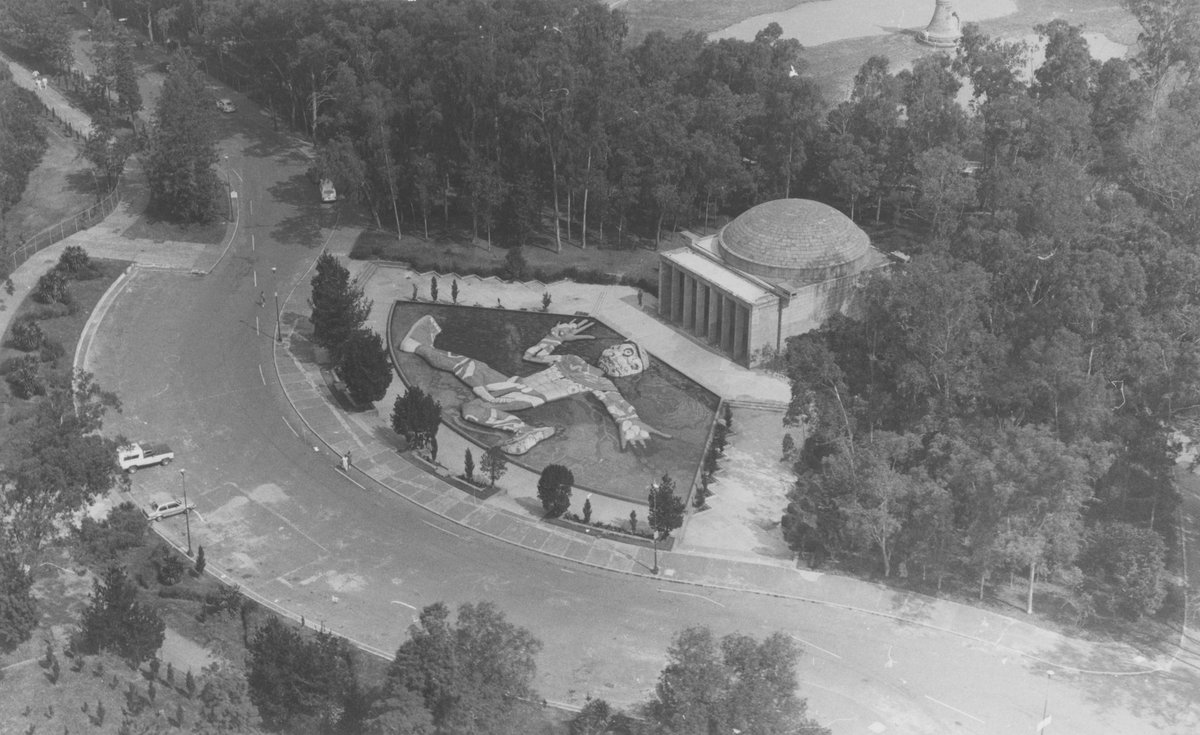
Visiting Museo Jardín del Agua: Hours, Tickets, and Travel Tips
Date: 23/07/2024
Introduction
Nestled within the historic Chapultepec Park in Mexico City, the Museo Jardín del Agua is a cultural and historical landmark that offers visitors a unique blend of natural beauty, historical significance, and educational value. Chapultepec Park itself is one of the largest city parks in the Western Hemisphere and has been a significant site since the pre-Hispanic era, serving as a retreat for Aztec rulers. The museum, designed by renowned Mexican architect Ricardo Legorreta, is a modernist structure that incorporates traditional Mexican motifs, creating a space that is both contemporary and deeply rooted in local heritage (Exploring Museo Jardín del Agua).
The Museo Jardín del Agua is dedicated to the rich history of water management in the region, paying homage to the ancient engineering feats of the Aztecs and the subsequent developments brought by the Spanish conquest. The museum serves as an educational and cultural hub, raising awareness about the importance of water conservation and sustainable practices, a mission highly relevant given Mexico City’s current challenges related to water scarcity and management (Exploring Museo Jardín del Agua). Visitors can explore a variety of exhibits, including the iconic ‘Fuente de Tláloc’ by Diego Rivera, and interactive displays that engage audiences of all ages.
Table of Contents
- Introduction
- History and Significance of Museo Jardín del Agua
- Cultural and Educational Impact
- Notable Exhibits and Features
- Key Attractions and Exhibits
- Visitor Information
- Community Engagement and Outreach
- Future Prospects
- FAQ
- Conclusion
History and Significance of Museo Jardín del Agua
Origins and Historical Context
The Museo Jardín del Agua, located in Mexico City, intertwines the natural beauty of gardens with the rich history of water management in the region. Situated within Chapultepec Park, one of the largest city parks in the Western Hemisphere, the park itself dates back to the Aztec period, serving as a retreat for Aztec rulers. The museum’s location within this historic park adds layers of historical significance to its existence.
Architectural Significance
The Museo Jardín del Agua is housed in a structure designed by the renowned Mexican architect Ricardo Legorreta. Legorreta’s design philosophy often incorporated elements of Mexican culture and history, and this museum is no exception. The building’s architecture blends modernist design with traditional Mexican motifs, creating a space that is both contemporary and deeply rooted in the local heritage. The use of water features and gardens within the museum’s design is a nod to the ancient Aztec reverence for water and nature.
The Role of Water in Aztec Civilization
Water played a crucial role in the development of the Aztec civilization, which thrived in the Valley of Mexico. The Aztecs were masterful engineers, creating an extensive network of aqueducts, canals, and chinampas (floating gardens) to manage water resources. The Museo Jardín del Agua pays homage to these ancient engineering feats, showcasing the ingenuity and sophistication of Aztec water management systems. Visitors can explore exhibits that detail the construction and operation of these systems, providing a deeper understanding of how the Aztecs sustained their large population and agricultural productivity.
Post-Colonial Developments
Following the Spanish conquest of the Aztec Empire in the early 16th century, the water management systems in the Valley of Mexico underwent significant changes. The Spanish introduced new technologies and methods, which were integrated with the existing Aztec infrastructure. The Museo Jardín del Agua highlights this period of transition, illustrating how the blending of indigenous and European techniques shaped the region’s water management practices. This historical narrative is crucial for understanding the evolution of water systems in Mexico City and their impact on the city’s growth and development.
Modern Significance
In contemporary times, the Museo Jardín del Agua serves as an educational and cultural hub, raising awareness about the importance of water conservation and sustainable practices. Mexico City faces significant challenges related to water scarcity and management, making the museum’s mission highly relevant. Through interactive exhibits and educational programs, the museum engages visitors in discussions about modern water issues, encouraging them to think critically about their water usage and the broader environmental impact.
Cultural and Educational Impact
The Museo Jardín del Agua is not just a museum but a living garden that integrates art, history, and nature. It offers a serene environment where visitors can reflect on the historical and cultural significance of water. The museum’s gardens are meticulously designed to represent different aspects of Mexico’s natural landscape, providing a sensory experience that complements the educational exhibits. This holistic approach makes the museum a valuable resource for both locals and tourists, fostering a deeper appreciation for Mexico’s rich cultural heritage and the vital role of water in sustaining life.
Notable Exhibits and Features
Fuente de Tláloc
One of the standout features of the Museo Jardín del Agua is the “Fuente de Tláloc” (Fountain of Tláloc), a massive sculpture and fountain dedicated to the Aztec god of rain. This iconic piece, created by the artist Diego Rivera, is a testament to the enduring legacy of Aztec culture and its reverence for water deities. The fountain is not only an artistic masterpiece but also a functional water feature, symbolizing the continuous flow of water and its life-giving properties.
Sala de Agua
Another significant exhibit is the “Sala de Agua” (Water Hall), which houses a collection of artifacts and documents related to the history of water management in Mexico. This exhibit provides a comprehensive overview of the technological advancements and cultural practices that have shaped the region’s relationship with water over the centuries. Interactive displays and multimedia presentations make the information accessible and engaging for visitors of all ages.
Key Attractions and Exhibits
Hydraulic Works of Eduardo Molina
One of the most significant attractions at the Museo Jardín del Agua is the hydraulic works designed by the renowned Mexican engineer Eduardo Molina. These works are a testament to the ingenuity and technical prowess of early 20th-century Mexican engineering. The hydraulic system, which includes a series of aqueducts, canals, and reservoirs, was originally constructed to manage the water supply of Mexico City. Visitors can explore these structures and gain insight into the historical challenges and solutions related to urban water management. The intricate design and functionality of these hydraulic works are a marvel to behold, making them a must-see for anyone interested in engineering and history.
Cárcamo de Dolores
The Cárcamo de Dolores is another key exhibit within the Museo Jardín del Agua. This monumental water intake structure was built in the 1950s as part of the Lerma System, which was designed to bring water from the Lerma River to Mexico City. The Cárcamo de Dolores is not only an engineering feat but also an artistic masterpiece. The interior of the structure features a stunning mural by the famous Mexican artist Diego Rivera, titled “El Agua, Origen de la Vida” (Water, Origin of Life). This mural depicts the importance of water to human civilization and the natural world, blending art and science in a unique and captivating way. Visitors can view the mural and learn about the historical context of the Lerma System and its impact on Mexico City’s water supply.
Diego Rivera Mural
As mentioned, the Diego Rivera mural inside the Cárcamo de Dolores is a highlight of the museum. This mural is a prime example of Rivera’s ability to combine social commentary with artistic expression. The mural covers the walls and ceiling of the Cárcamo and features a series of interconnected scenes that illustrate the vital role of water in sustaining life. Rivera’s use of vibrant colors and dynamic compositions draws visitors into the narrative, making them reflect on the significance of water in their own lives. The mural is a powerful reminder of the interconnectedness of human society and the natural environment.
Water Garden
The Water Garden, or Jardín del Agua, is an integral part of the museum experience. This beautifully landscaped garden is designed to showcase the various ways in which water can be used to create aesthetically pleasing and ecologically sustainable environments. The garden features a variety of native plants and water features, including ponds, fountains, and streams. Visitors can stroll through the garden and enjoy the serene atmosphere while learning about the importance of water conservation and sustainable landscaping practices. The Water Garden serves as a living exhibit that demonstrates the principles of ecological design and the beauty of natural water systems.
Interactive Exhibits
The Museo Jardín del Agua also offers a range of interactive exhibits that engage visitors of all ages. These exhibits are designed to educate the public about the science of water and its critical role in the environment. One popular exhibit is the water cycle simulation, which allows visitors to see how water moves through different stages, from evaporation to precipitation and infiltration. Another interactive exhibit focuses on water conservation techniques, providing practical tips and strategies for reducing water usage in everyday life. These hands-on exhibits make learning about water fun and accessible, encouraging visitors to think critically about their own water consumption habits.
Historical Exhibits
In addition to its focus on engineering and art, the Museo Jardín del Agua also features historical exhibits that provide context for Mexico City’s complex relationship with water. These exhibits include artifacts, photographs, and documents that trace the history of water management in the city from pre-Hispanic times to the present day. Visitors can learn about the ancient Aztec aqueducts, the colonial-era waterworks, and the modern infrastructure projects that have shaped the city’s water supply. These historical exhibits offer a comprehensive overview of the challenges and innovations that have defined Mexico City’s efforts to secure a reliable water source.
Educational Programs
The Museo Jardín del Agua is committed to education and offers a variety of programs for students, teachers, and the general public. These programs include guided tours, workshops, and lectures that cover topics related to water science, engineering, and conservation. The museum also collaborates with schools and universities to provide educational resources and support for water-related research projects. By fostering a deeper understanding of water issues, the museum aims to inspire the next generation of scientists, engineers, and environmentalists.
Temporary Exhibits
In addition to its permanent exhibits, the Museo Jardín del Agua hosts temporary exhibits that explore various aspects of water and its significance. These exhibits often feature contemporary art, photography, and multimedia installations that offer new perspectives on water-related themes. Past temporary exhibits have included works by local and international artists, as well as collaborative projects with other museums and cultural institutions. These rotating exhibits ensure that there is always something new and exciting to see at the museum, making it a dynamic and ever-evolving destination.
Visitor Information
Visiting Hours
The Museo Jardín del Agua is open to the public from Tuesday to Sunday. The visiting hours are from 10:00 AM to 6:00 PM. Please note that the museum is closed on Mondays and public holidays.
Tickets
The ticket prices for the Museo Jardín del Agua are as follows:
- Adults: $50 MXN
- Students, Teachers, and Seniors: $25 MXN (with valid ID)
- Children under 12: Free
Tickets can be purchased at the museum entrance or online through the official website.
Travel Tips
- How to Get There: The museum is easily accessible by public transportation. The nearest metro station is Chapultepec (Line 1), and from there, it’s a short walk to the museum.
- Best Time to Visit: To avoid crowds, consider visiting the museum early in the morning or later in the afternoon.
- What to Bring: Comfortable walking shoes, a hat, and sunscreen are recommended, especially if you plan to explore the gardens.
Nearby Attractions
While visiting the Museo Jardín del Agua, you can also explore other nearby attractions in Chapultepec Park, including:
- Chapultepec Castle
- The National Museum of Anthropology
- Chapultepec Zoo
- The Modern Art Museum
Community Engagement and Outreach
The Museo Jardín del Agua actively engages with the local community through various outreach programs and events. These initiatives aim to educate the public about water conservation and environmental stewardship. Workshops, lectures, and guided tours are regularly organized to provide in-depth knowledge about the museum’s exhibits and the broader issues of water management. The museum also collaborates with schools and universities, offering educational resources and opportunities for students to learn about the historical and contemporary significance of water.
Future Prospects
Looking ahead, the Museo Jardín del Agua aims to expand its reach and impact by incorporating new technologies and interactive elements into its exhibits. Plans are underway to develop virtual tours and online resources, making the museum’s wealth of knowledge accessible to a global audience. By embracing digital innovation, the museum hopes to continue its mission of educating and inspiring people about the importance of water conservation and the rich cultural heritage of Mexico.
FAQ
What are the visiting hours for Museo Jardín del Agua?
The museum is open from Tuesday to Sunday, 10:00 AM to 6:00 PM, and is closed on Mondays and public holidays.
How much are tickets for Museo Jardín del Agua?
Ticket prices are $50 MXN for adults, $25 MXN for students, teachers, and seniors (with valid ID), and free for children under 12.
What are some nearby attractions?
Nearby attractions include Chapultepec Castle, the National Museum of Anthropology, Chapultepec Zoo, and the Modern Art Museum.
Conclusion
In summary, the Museo Jardín del Agua is a vital cultural institution that celebrates the historical and contemporary significance of water in Mexico. Through its thoughtfully designed exhibits and educational programs, the museum provides a comprehensive and engaging exploration of water’s role in shaping the region’s history, culture, and future. Visitors to the museum can expect a memorable and enriching experience that deepens their understanding of Mexico’s unique relationship with water. Be sure to plan your visit, explore nearby attractions, and immerse yourself in the rich cultural heritage that the Museo Jardín del Agua has to offer (Exploring Museo Jardín del Agua).
Call to Action
Stay up to date with the latest exhibitions and events at Museo Jardín del Agua by following us on social media and visiting our official website. Don’t forget to check out our mobile app for a more interactive experience during your visit (The Ultimate Guide to Visiting Museo Jardín del Agua).
References
- Exploring Museo Jardín del Agua - History, Visiting Hours, and Tickets in Mexico City, 2024, Author Exploring Museo Jardín del Agua
- The Ultimate Guide to Visiting Museo Jardín del Agua in Mexico City, 2024, Author The Ultimate Guide to Visiting Museo Jardín del Agua
- Visiting Museo Jardín del Agua - Hours, Tickets, and Tips for a Memorable Experience in Mexico City, 2024, Author Visiting Museo Jardín del Agua
